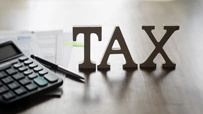Understanding ITR-1 (Sahaj) vs ITR-4 (Sugam)
Disclaimer: Ujjivan Small Finance Bank does not offer personal finance advice or products. Ujjivan SFB is not responsible for the accuracy of the information provided herein. This blog is written for generic information only.
July 05, 2025

When you file your income tax return in India, you must choose the right ITR form. Two common forms for small taxpayers are ITR-1 (Sahaj) and ITR-4 (Sugam). At first glance they look similar, but there are key differences in who can use them, what income they cover, and how business income is handled. We’ll break down the latest rules so you can pick the correct form.
Who can use ITR-1 (Sahaj) vs ITR-4 (Sugam)
You cannot use ITR-1 if you are a non-resident (or not ordinarily resident), if you own more than one house, or if you earn business/professional income, capital gains, or foreign income. Also, if you are a company director, hold unlisted shares, or have any overseas asset, ITR-1 is not allowed.
However, there are several conditions that make an individual, HUF, or Firm ineligible to file ITR-4 for AY 2025-26. Those who are a Resident but Not Ordinarily Resident (RNOR) or a Non-Resident Indian are excluded. Similarly, individuals whose total income exceeds ₹50 lakh, or those with short-term capital gains, or long-term capital gains under section 112A exceeding ₹1.25 lakh, are not eligible. In addition, individuals with agricultural income exceeding ₹5,000, or those who are directors in a company, cannot file ITR-4. Income from more than one House Property, winnings from lottery, or activities involving owning and maintaining race horses also disqualify individuals. Those with income taxable under special rates under sections 115BBDA or 115BBE, those who have held unlisted equity shares during the previous year, or those with deferred income tax on ESOP from an eligible start-up are ineligible. Any individual who does not meet the prescribed eligibility conditions for ITR-4 also cannot file this form.
In short, ITR-1 is for “only salary/pension + simple income”, while ITR-4 is for small business owners or freelancers who opt for presumptive tax. A salaried person with no other sources will usually file ITR-1, whereas a small shop owner or a freelancer can use ITR-4 if they meet the conditions. Both forms have the same ₹50 lakh income ceiling.
Income Sources and Limits
Here’s a quick comparison of allowed incomes in each form:
Presumptive Taxation in ITR-4
A standout feature of ITR-4 is presumptive taxation. This is a simplified tax scheme for small businesses and professionals:
If you opt for presumptive taxation, you must use ITR-4. Conversely, if you decide not to use presumptive scheme (or you don’t meet its conditions), you cannot file ITR-4 and need to use ITR-3. For example, a freelancer earning ₹40 lakh who chooses presumptive (44ADA) can file ITR-4. But if their receipts are ₹60 lakh, or they want to show actual profits and expenses instead of 50%, they must file ITR-3.
Choosing between Sahaj and Sugam
Final Thoughts
Choosing the right ITR form ensures your tax return is accepted smoothly. In FY 2024-25, the Income Tax Department has relaxed some rules: for example, both Sahaj and Sugam now allow small LTCG up to ₹1.25 lakh. But the basic eligibility still hinges on your income sources. Always review the latest guidelines or use a trusted e-filing tool to select the correct form. When in doubt, remember: ITR-1 for only salary/pension + basic income, ITR-4 for simple business/professional income under the presumptive scheme.
Kick-start your financial journey with Ujjivan. Save more with our high-interest Savings Account and Deposit products. Need cash for your business or personal needs? Apply for MSME Loans or Micro Loans with us – we offer competitive rates and quick disbursal. We also offer vehicle loans and home loans tailored for your unique requirements. Experience a smooth banking journey with Ujjivan SFB!
Disclaimer:
The contents herein are only for informational purposes and generic in nature. The content does not amount to an offer, invitation or solicitation of any kind to buy or sell, and are not intended to create any legal rights or obligations. This information is subject to updation, completion, amendment and verification without notice. The contents herein are also subject to other product-specific terms and conditions, as well as any applicable third-party terms and conditions, for which Ujjivan Small Finance Bank assumes no responsibility or liability.
Nothing contained herein is intended to constitute financial, investment, legal, tax, or any other professional advice or opinion. Please obtain professional advice before making investment or any other decisions. Any investment decisions that may be made by the you shall be at your own sole discretion, independent analysis and evaluation of the risks involved. The use of any information set out in this document is entirely at the user’s own risk. Ujjivan Small Finance Bank Limited makes no representation or warranty, express or implied, as to the accuracy and completeness for any information herein. The Bank disclaims any and all liability for any loss or damage (direct, indirect, consequential, or otherwise) incurred by you due to use of or due to investment, product application decisions made by you on the basis of the contents herein. While the information is prepared in good faith from sources deemed reliable (including public sources), the Bank disclaims any liability with respect to accuracy of information or any error or omission or any loss or damage incurred by anyone in reliance on the contents herein, in any manner whatsoever.
To know more about Ujjivan Small Finance Bank Products Visit:"https://www.ujjivansfb.in"
All intellectual property rights, including copyrights, trademarks, and other proprietary rights, pertaining to the content and materials displayed herein, belong
to Ujjivan Small Finance Bank Limited or its licensors. Unauthorised use or misuse of any intellectual property, or other content displayed herein is strictly prohibited and the same is not intended for distribution to, or use by, any person in any jurisdiction where such distribution or use would (by reason of that person’s nationality, residence or otherwise) be contrary to law or registration or would subject Ujjivan Small Finance Bank Limited or its affiliates to any licensing or registration requirements.
FAQs
1. I have a salaried job and also earn a bit from freelancing. Can I still file ITR-1?
If your freelance income is zero or you choose the Section 44ADA presumptive scheme (reporting 50% of receipts as income), you can use ITR-4 instead of ITR-1. But if you do not opt for presumptive taxation and have business profits, Sahaj (ITR-1) is not allowed at all – you’d need ITR-3. The combined income must also be under ₹50 lakh.
2. My only capital gain this year is ₹1 lakh from stocks. Can I still file ITR-1 or ITR-4?
Yes. Recent rules for AY 2025-26 allow reporting long-term capital gains from listed shares/funds up to ₹1.25 lakh in either form. So a ₹1 lakh LTCG would still fit in ITR-1 or ITR-4. (Be sure it’s under Section 112A and that your other income fits the form’s rules.) Any capital gain beyond ₹1.25 lakh, or short-term gains, would require ITR-2 or ITR-3 instead.
3. What if my total income is over ₹50 lakh or I have foreign income?
If your income exceeds ₹50 lakh in FY 2024-25, you cannot use Sahaj or Sugam. Also, any foreign income or assets, multiple house properties, or other special incomes force you to file ITR-2 or ITR-3. In short, ITR-1/4 are only for simple cases. For higher incomes or complex sources, choose the form that matches your situation (ITR-2 for higher salaries/CG but no business, ITR-3 for business/professional income)
Latest Blogs

ITR-1 (Sahaj) Restrictions: Income Sources Not Allowed & Filing Rules
With just a few days left before the 15 September 2025 deadline for filing Income Tax Returns (ITRs) for Assessment Year (AY) 2025-26, many taxpayers are rushing to submit their forms online.

GST Rate Cut on Electronics: What It Means for Consumers and Retailers
India’s Goods and Services Tax (GST) system has entered a new era with the rollout of GST 2.0, effective from September 22, 2025.

Banking Safety Guide: How to Avoid QR Code Frauds While Making Payments
India’s love for QR code payments has made transactions lightning-fast, but also opened a new front for cybercriminals.

Scam Alert! Phishing, Vishing, and Smishing Can Drain Out Your Finances
Digital banking in India has transformed the way we manage money.

India’s New GST Reform Bill: What GST 2.0 Means for You
India’s indirect tax system is entering a landmark new phase.


